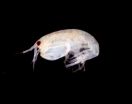(Press-News.org) A new satellite that will detect the lightning inside storm clouds may lead to valuable improvements in tornado detection. The GOES-R satellite is currently being built with new technology that may help provide earlier warnings for severe weather. The national average is a 14-minute lead time to warn residents of a tornado, but NASA and NOAA scientists are looking to improve severe weather detection to save lives and property. They are developing the Geostationary Operational Environmental Satellite-R Series, or GOES-R, to observe thunderstorm development with much greater spatial and temporal detail than ever before. Severe weather knows no specific season and the new technology aboard GOES-R is expected to help provide earlier detection for warnings, whatever the time of year.
On Jan. 29 and 30, 2013, a winter-time tornado outbreak produced multiple tornadoes from the southern Plains states, across the Mississippi River Valley, eastward to the Mid-Atlantic. On Feb. 10, several tornadoes touched down in Mississippi, destroying 200 homes, damaging and causing injuries near Hattiesburg.
"These storms can spin up pretty quickly which limits warning lead-time," said NOAA scientist Steve Goodman. "The radar and storm spotter's view of tornadoes reaching the ground can be blocked by terrain, or visibility is very poor when the tornado is wrapped in rain. And it's certainly more challenging for storm spotters to observe and confirm tornadoes occurring at night. Sometimes it's just plain hard to come up with enough advance warning."
For the first time, scientists will be able to detect the lightning occurring inside storm clouds, and thus better track how developing storms are moving and intensifying before and during the occurrence of severe weather, Goodman said, all of which will help meteorologists better predict weather disasters.
"Based on the GOES-R research, there is a potential for greater accuracy and additional tornado warning lead time," Goodman said. One significant advancement could help detect developing tornadoes at night to provide the public more time to get to safety.
Studies show that a sudden increase in total lightning flash rate is correlated to impending tornadoes and severe storms. The GOES-R Geostationary Lightning Mapper (GLM) will have a new capability to take continuous day and night measurements of the frequent intra-cloud lightning activity that accompanies many severe storms. This will help forecasters identify intensifying storms before they start producing severe weather on the ground, enabling the issuance of more timely and accurate severe weather warnings.
"The majority of lightning is the in-cloud lightning and that's difficult to detect, especially in the daytime," Goodman said. "GLM will provide new information on lightning in the cloud that our eyes cannot see to allow forecasters to make an earlier determination of a severe and tornadic storms' potential."
The GLM instrument will see all types of lightning: cloud-to-ground, cloud-to-cloud and inside each cloud, and because the GOES-R satellite will cover most of the Western Hemisphere, it will help meteorologists track storms over the land and ocean from their inception.
But lightning isn't the only sign of an impending storm.
Monitoring overshooting cloud tops can provide an early indication of a severe storm. These are dome-like clouds that penetrate above the anvil of a thunderstorm. The Advanced Baseline Imager (ABI) on GOES-R will better detect these overshooting tops that indicate a strong updraft.
While the current GOES satellite imager usually provides updated weather conditions during the formation of a storm about every 15 or 30 minutes, ABI will be able to show the changing cloud and weather conditions every 30 seconds in rapid scan mode. When ABI is not monitoring the formation of a storm, it will send imagery over the United States every 5 minutes instead of every 15 minutes, greatly increasing the data available to weather forecasters.
VIDEO:
Tornadoes with Tim Samaras: Severe storm researcher and engineer Tim Samaras talks about his view on tornadoes, the importance of satellite imagery to his research and the future of forecasting...
Click here for more information.
In addition to providing crucial information as part of NOAA's fleet of operational weather satellites, GOES-R will also monitor space weather, such as solar flares and geomagnetic storms that stem from the sun's activity and can affect spacecraft and human spaceflight.
The Extreme Ultraviolet and X-ray Irradiance Sensors (EXIS) will detect solar flares that can disrupt communication, power grids and have effects on satellites and airline passengers. The Solar Ultraviolet Imager (SUVI) is a telescope that observes the sun to detect eruptions which may result in coronal mass ejections. And to assess radiation hazard to astronauts and satellites, the Space Environment In-Situ Suite (SEISS) will monitor protons, electrons and heavy ion fluxes at geosynchronous orbit. GOES-R's Magnetometer (MAG) will also measure the magnetic field in space.
NOAA manages the GOES-R Program with an integrated NOAA-NASA program office organization, staffed with personnel from NOAA and NASA, and supported by industry contractors. The program is co-located at NASA's Goddard Space Flight Center in Greenbelt, Md. GOES-R is expected to launch in late 2015.
INFORMATION:
For more information about GOES-R and the current GOES satellite fleet, visit:
www.goes-r.gov/
http://goes.gsfc.nasa.gov/
NOAA and NASA's next generation weather satellite may provide earlier warnings
2013-03-01
ELSE PRESS RELEASES FROM THIS DATE:
NASA's Van Allen Probes discover a surprise circling Earth
2013-03-01
After most NASA science spacecraft launches, researchers wait patiently for months as instruments on board are turned on one at a time, slowly ramped up to full power, and tested to make sure they work at full capacity. It's a rite of passage for any new satellite in space, and such a schedule was in place for the Van Allen Probes when they launched on Aug. 30, 2012, to study two giant belts of radiation that surround Earth.
But a group of scientists on the mission made a case for changing the plan. They asked that the Relativistic Electron Proton Telescope (REPT) be ...
Zeroing in on heart disease
2013-03-01
Studies screening the genome of hundreds of thousands of individuals (known as Genome-wide association studies or GWAS) have linked more than 100 regions in the genome to the risk of developing cardiovascular disease. Researchers from the European Molecular Biology Laboratory (EMBL) and the University of Heidelberg, through the joint Molecular Medicine Partnership Unit (MMPU), are taking these results one step further by pinpointing the exact genes that could have a role in the onset of the disease. Their findings are published today in the Public Library of Science (PLoS) ...
New marine species discovered in Pacific Ocean
2013-03-01
HOLLYWOOD Fla. — When Jim Thomas and his global team of researchers returned to the Madang Lagoon in Papua New Guinea, they discovered a treasure trove of new species unknown to science.
This is especially relevant as the research team consisted of scientists who had conducted a previous survey in the 1990s.
"In the Madang Lagoon, we went a half mile out off the leading edge of the active Australian Plate and were in 6,000 meters of water," said Thomas, Ph.D., a researcher at Nova Southeastern University's National Coral Reef Institute in Hollywood, Fla.
"It was ...
BPA raises risk for childhood asthma
2013-03-01
Researchers at the Columbia Center for Children's Environmental Health at the Mailman School of Public Health are the first to report an association between early childhood exposure to the chemical bisphenol A (BPA) and an elevated risk for asthma in young children. BPA is a component of some plastics and is found in food can liners and store receipts.
Results appear in the March edition of the Journal of Allergy and Clinical Immunology.
"Asthma prevalence has increased dramatically over the past 30 years, which suggests that some as-yet-undiscovered environmental exposures ...
Pharmaceutical companies: An $84 million marketing effort in the District of Columbia
2013-03-01
Washington, D.C.—Drug companies spent nearly $84 million marketing pharmaceuticals in the District of Columbia in 2011, including an outlay of nearly $19 million for gifts given to physicians, hospitals and other health care providers, according to a report by researchers at the George Washington University School of Public Health and Health Services (SPHHS). The report notes that 12 physicians in the District received gifts (including consulting payments) that totaled more than $100,000 apiece that one year alone.
"There is nothing inherently wrong with such gifts," ...
Cancer doesn't change young girls' desire to have children, Moffitt Cancer Center study shows
2013-03-01
Researchers at Moffitt Cancer Center and colleagues have found that healthy adolescent females have predetermined expectations for becoming parents in the future, but have concerns about fertility and childbearing should they develop a life-threatening illness, such as cancer.
The study appeared in the February issue of the Journal of Adolescent Health.
According to the researchers, this study helped further validate a tool that seeks to understand teenage girls' hopes and feelings about reproduction, especially when fertility is threatened by cancer. The participants ...
Mother Teresa: Anything but a saint…
2013-03-01
The myth of altruism and generosity surrounding Mother Teresa is dispelled in a paper by Serge Larivée and Genevieve Chenard of University of Montreal's Department of Psychoeducation and Carole Sénéchal of the University of Ottawa's Faculty of Education. The paper will be published in the March issue of the journal Studies in Religion/Sciences religieuses and is an analysis of the published writings about Mother Teresa. Like the journalist and author Christopher Hitchens, who is amply quoted in their analysis, the researchers conclude that her hallowed image—which does ...
Credit card debt expected to rise in 2013
2013-03-01
Credit card debt expected to rise in 2013
Article provided by The Law Office of Lauren Clark, L.L.C.
Visit us at http://www.laurenclarklaw.com
During the recent recession, many Americans imposed austerity measures on themselves. As a result, credit card debt declined. However, recent data indicates that many have become comfortable taking on more debt. According to a report issued by the Federal Reserve Bank of New York, credit card debt rose by $2 billion in the third quarter of 2012, even as the total debt held by Americans dropped by $74 billion.
Data from ...
Bankruptcy may be an option that can help you get out of debt
2013-03-01
Bankruptcy may be an option that can help you get out of debt
Article provided by The Law Offices of William D. Black
Visit us at http://www.billblacklaw.com
Many Arizona residents who feel overwhelmed by debt are reluctant to file for bankruptcy. However, bankruptcy might be the best way out of a difficult financial situation, leaving a debtor in a position to make a new start.
Many opt for bankruptcy
Bankruptcy was a route taken by over 1.2 million Americans in 2012, according to the U.S. Bankruptcy Courts. In Arizona, 28,514 bankruptcies were filed in 2012, ...
Lax oversight of oil and gas sites leaves workers and neighbors at risk
2013-03-01
Lax oversight of oil and gas sites leaves workers and neighbors at risk
Article provided by Gilde Law Firm
Visit us at http://www.gildelawfirm.com
A report from ProPublica, a nonprofit investigative journalism organization, highlights the danger presented by the network of oil and gas pipelines across the U.S. and under-supervised frackingsites. It appears there are simply not enough regulators to thoroughly inspect oil and gas operation sites, exacerbating the risk of harmful explosions and other dangers associated with oil and gas production.
According to statistics ...


